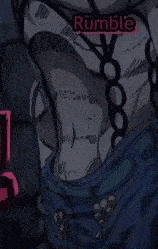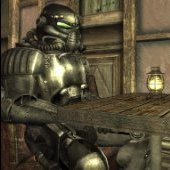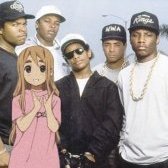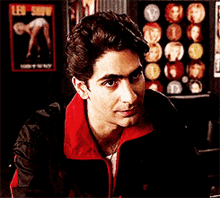Leaderboard
Popular Content
Showing content with the highest reputation on 03/04/2022 in all areas
-
I really don't get why people are so adamant about keeping Vice City, Liberty City etc when practically it makes no difference and has no benefit. To me it just sounds goofy and breaks immersion, especially if half the population is saying New York and half is saying Liberty City. If people have roleplayed their characters coming from these places then just swap them to the real life counterpart as this is what we'd be roleplaying as in game anyway. Liberty City = New York, not the Liberty City you know from the games. Why add this unnecessary step that only serves to break immersion?3 points
-
As you may remember, on the SA-MP Server, there was an opportunity to roleplay with hospital staff at All Saints, County General, and some other locations as time went on. I'm happy to say that this type of roleplay will be carried over to the GTA V server. Here is what we have determined so far: On an in-character basis, we will have a private, independently-run hospital. We're still finalizing which location we will be using in-game. On an out-of-character basis, we will be in the same faction as the LSFD. This set up is to give us access to a stable forum and in-game faction. We are, however, an independent sub-faction within the LSFD and independent of their rank structure. On that note, we're following a somewhat similar format to the LSFD before 2016 which had a two-sector system: (1) EMT/Firefighter and (2) Hospital. However, during that time, the faction allowed for the unrealistic practice of characters who were both firefighters and doctors. That will no longer be the case; instead of two sectors within the LSFD, it is now going to be two factions: the LSFD main faction and the hospital sub-faction, with separate rank structures, leadership, and roleplay locations. We will allow only physician characters to join. Our rank structure essentially follows a realistic medical path: Intern, Resident, (possible, but not necessary promotion:) Chief Resident, (possible, but not necessary promotion:) Fellow, Attending Physician, Deputy Chief of Medicine, and Chief of Medicine. While a Deputy Chief of Medicine rank generally does not exist in real life, we want to be able to assemble a small team for the hospital faction's leadership and maintain the separate supervisory rank of Attending Physician. While the Chief of Medicine is the leader of the hospital faction, only on an OOC basis, the Chief of Medicine answers to the Fire Chief. For in-character purposes, the Chief of Medicine answers to a (non-existent) Board of Directors - basically, a RP name for being answerable to someone above the Chief of Medicine. I will be the Chief of Medicine. I was involved in hospital roleplay off and on between 2014 and 2018 and was in charge of the LSFD's hospital sector and sub-sector for good chunks of time. We have no plans to have ordinary "hospitalist" doctors or nurses at this point. Those will be NPCs for roleplay purposes. We aim to strike a balance between realism and ease of access for players. We are not trained medical professionals in real life. We have a series of guides that were used before (and have now been updated) that I believe puts a fair balance between realism and ease of access for the player base. There is only a small learning curve for those who want to join the faction, but you can join with literally zero knowledge of anatomy and still do just fine as a member of the faction. We have relatively simple guides and a wealth of information for our faction members. The hospital sector was most successful on SA-MP when there were events that brought people into the hospital. This included the disaster events, LSFD-hosted blood drives, fundraisers, or advertisements for general checkups. Excluding disaster events (we obviously have no say on that), we do plan on eventually hosting similar events to draw interest to the faction. We want to create a faction that is fun for faction members and for general players. In some cases, most of the work that we would do on SA-MP was treating gunshot wounds or handling people begging for medication because they were affected by the script's addiction system. How exactly that trend will change is up to you, the player base: what is it that you want to see from the hospital faction? If you were previously involved in hospital roleplay on the SA-MP server and are interested in participating, do reach out to me as well! We also have information on the sort of recruitment we will be doing on the LSFD forums if you are interested in reading more.1 point
-
Since this server is going to have norteños, it makes sense to discuss their counterpart, which will inevitably be roleplayed too. The purpose of this thread is to cover the basic concept of "upstate sureños". I never saw this done on LSRP, and I wasn't even familiar with their history and culture until only a couple of years ago after I had already left. Therefore I'm assuming it's not widely known knowledge. I'd like to get this information out there so that it might be of assistance to anybody considering a faction like this, or perhaps it might bring these gangs to your attention if you're unfamiliar with them. "Upstate sureños" are sureños in northern California. They differ from Central Valley/'Centro Valle' sureños and proper Southern California sureños in very significant ways. Traditionally, the only sureños who actually had contact with norteños and fought them outside of prison were those in the Central Valley area, in towns like Bakersfield and Visalia where the north/south lines met. This changed with the growth of upstate sureños. Since the 90s, sureño gangs have been growing in Northern California and now represent a significant threat to the business interests of the Nuestra Familia. The important thing to note about upstate sureños is that they are not sureños from L.A. or SoCal who "moved", as some might think. They are homegrown northern gangs. Their roots lay in Hispanic varrios who had conflict with norteños. Many of them were 'paisas' or the children of paisas, who were considered southerners by the norteños and thus targeted. These groups started their own varrios, beginning in the 80s, and eventually took up the sureño identity purely out of hostility to norteños. These northern sureños would be exposed to SoCal sureños in prison, who up until then were not aware of their existence. At some point the Mexican Mafia, or more likely one member of it with central or northern territories, put these gangs under their flag. I am not familiar with the specifics of this story but it definitely happened, as northern carnales collect tax from them. This essentially made upstate sureños bonafide sureños, and there have been '13' gangs in the north ever since. Most of these varrios are located in the major cities in the Bay Area, but there are also some in traditional norteño stronghold towns like Salinas. Their combat with local norteños is vicious. The second important point is that these are no longer paisa gangs. They are in their 3rd or 4th generation and are now as northern as the norteños in their 'breeding', so to speak. It's just that if you're born into a 13 neighborhood instead of a 14 neighborhood, you're going to be an upstate sureño. I'm not totally familiar with all of the cultural differences between NorCal and SoCal sureños and how that plays out in prison, but I know that they are significant. Upstate sureños are notably different to, for example, an 18th St member. The Eme-NF truce inside the prison system has been very confusing and frustrating for both upstate sureños and for the norteños who have them in their communities. These gangs are brought up to hate each other in a way that is probably fiercer than most other gang rivalries, but are then told they are not permitted to fight them once they get to prison. Just an interesting point of trivia. I'd like to encourage discussion on this topic, and the possibility of having both norteños and upstate sureños roleplaying in Grapeseed/Paleto Bay. If roleplayed properly, there is potential for extremely interesting gang interactions and dynamics.1 point
-
GUIDE TO PAISA ROLEPLAY @Freedom Fighter, @EGN & @Nuke Introduction Understanding Narco culture USA Paisa Prison culture & Paisa Gangs USA based Paisa plenipotentiaries Females in the Narco underworld Summary Everything above is what you can expect to read about and learn in this guide, the guide itself will be kept somewhat short but still detailed enough to give people a deep insight to how they should roleplay their characters. This guide will be simply what it’s intended for, a guide, so don’t expect me to hold your hand and give you a step by step walkthrough. INTRODUCTION Hey there, if you’re reading this then it’s probably because you want to know more about roleplaying a Mexican National, if so there’s a lot of stuff you need to know about roleplay as a person involved in the Paisa criminal underworld. It can get very tricky and complex, to a point that a lot of stuff can actually get confusing. We’ve personally been roleplaying in the Paisa scene for years and a lot of our knowledge has been gathered through external sources, reading between the lines, speaking to certain individuals that have grown up around Narco traffickers etc, although we’re not experts on the subject, we do believe our knowledge is enough to justify reasoning to make this. Also, lil tip it’s pronounced “Pie-sa”, “Pie-sa-no”, “Pie-sa-na”. UNDERSTAND NARCO CULTURE Understanding Narco culture can be quite confusing at times, especially if you don’t know an awful lot about the background of Mexico, and how traffickers evolved from individual plaza (turf) bosses running their own designated sections, to eventually being aligned to many of the different cartels throughout the country. The thing with Narco traffickers is, at the very beginning they were all mostly from the state of Sinaloa, and keep this in your head because it plays a major connection a bit further into this guide, but originally it was plaza bosses running their own little turfs until Miguel Ángel Félix Gallardo had a bright idea to form Mexico’s first Narco commission, which became known as the Guadalajara Cartel; Mexico’s very first legitimate “Cartel”. But the major thing about this? The Guadalajara Cartel didn’t just become powerful due to having plaza bosses operating as a union under them, quite the opposite, sure it was a part in their power uprise but if it wasn’t for the Dirección Federal de Seguridad (DFS) the Guadalajara Cartel wouldn’t have been anything. The DFS is sort of like the CIA of Mexico, but the FBI at the same time. You’re probably wondering why I’m giving you this rundown, well it’s pretty simple because the Cartels in Mexico are usually backed by someone; the most powerful ones that is. It’s not hard to figure this out of course, but another major part of understanding Narco culture, especially in the modern day and age is to understand the political parties that are in Mexico. ] See, the thing is parties like MORENA and the Partido Revolucionario Institucional (PRI) are all allegedly backing Cartels to this very day in Mexico. Two examples of this is MORENA allegedly backing the Sinaloa Cartel and the PRI allegedly backing the Jalisco New Generation Cartel. This is one of the biggest issues when it comes to Narco roleplay, understanding the political parties, their goals and history because to fully understand the Narco underworld in Mexico, you first need to understand the political parties that run it. You remember The Zetas? The first group of mad men to turn Mexico’s Narco warfare into militarized combat? I’ll give you a few seconds to figure out how they managed to reign in huge control for almost a decade without any interference. That’s right, if you guessed the PRI then you know more than I thought you know already. See the PRI ruled Mexico through various presidential elections for decades upon decades, not losing a single one meaning they had control of the country, but when the MORENA party won one election it set off a ticking timebomb in the country that forever changed the criminal underworld in it. At the time the Zetas weren’t really known as the Zetas per say n were still coming up, and hadn’t fully found their identification yet but the PRI took note of them being Ex Cuerpo de Fuerzas Especiales (GAFES) and decided to manipulate it to their favour, helping a paramilitarized wing of the Gulf Cartel rise to power and eventually become their own thing once they split. Does this remind you of anything? That’s also right, if you guessed the Jalisco New Generation Cartel you know more than I thought you already knew. Just like the Z splitting from GAFES, Mencho split from the Milenio Cartel and with the PRI’s backing ended up forming CJNG. So I think by now you’re pretty versed in knowing that without political parties pulling strings, nothing would go. Now, you remember I mentioned Sinaloa priorly? Remember I said keep it in the back of your mind? Well that’s because most of these Cartels were once headed by Sinaloense Capos, who were mostly born in Badiraguato; described as Mexican Sicily. Sinaloa Cartel, Tijuana Organization, Juarez Organization etc were all founded by Sinaloan traffickers at one point in time. There’s also a common popular fashion trend in Mexico called Buchón/Buchóna fashion, this originated in Sinaloa and is now used country wide. The Buchón/Buchóna fashion trend was a way most Narco traffickers dressed, and eventually before you knew it, it became a common day trend among many people in the Mexican countryside and mountains. A contributing factor to the militarization of various drug cartels operating in Mexico is the recruitment of special forces, from both Mexico and other countries such as the Kaibiles of Guatemala. The majority of cartel operatives do not have military experience, and are instead trained by those who do. While the number of special forces who desert and join these organizations is generally low, the cartels supplement this by hiring police officers wherever they can. While it's rare for corrupt law enforcement to participate in crime in the United States, these cells filled entirely with Municipal police officers commit some of the most heinous murders and high profile kidnappings. Many "murder houses" were discovered to have been ran by such police cells. One's position in the organization depends on the skills a person provides for leadership such as logistical experience or business degrees. This assigns you to a position in the pyramid, the top dedicated to the most influential individuals and families controlling the entity itself. Once assigned a position it is very hard to rise above middle management, this could be equated to a lifetime position at a company but without the ability to move up to the very top. Despite what the media tells you, El Chapo was not the zenith of Sinaloa's hierarchy. They will also put their reputation behind other groups from south and central america, such as but not limited to Colombians, Cubans, Guatemalans, Panamanians and Venezuelans. They use such people who overstay their visas and remain illegally within Mexico to extort street vendors, clubs and taxi companies among many other businesses. This sophisticated scam is common throughout Latin America, known as 'gota a gota', offering small loans through Colombian front men and then begin to pressure more money by increasing the interest rates by %400 within only a few weeks. Another thing to keep in mind with the Narco underworld is that everyone is kept tabs on, what I mean by this is if you’re employed to work with a Cartel cell, chances are they already know more about you than you know about yourself. The reason for this is, it’s hugely beneficial for them to know who they’re employing, and when it comes to the fear factor, family and close friends are often threatened. Those with relatives are normally the ones that get second chances and stuff with their family being used as collateral, whilst those employed without relatives are usually given one shot and if they fuck up they’re tossed to the trash pile, the reasoning for this yet again is to ensure safety of the organization as a person who has something to lose is more likely to follow commands than someone who has nothing to lose would. "La Santa Muerte has crossed the US/Mexico Border for over a decade, accompanying her devotees on their arduous journeys north. Also known as La Flaquita (The Skinny One), La Niña Blanca (The White Girl), La Niña Negra (The Black Girl), Señora de las Sombras (Lady of the Shadows), La Huesuda (Bony Lady), La Niña Bonita (The Pretty Girl), La Madrina (The Godmother), and more reverently, La Santísima Muerte (The Most Holy Death), she is a beloved saint of dispossessed peoples. I first met Santa Muerte in 2002 during fieldwork with undocumented migrant transgender sex workers from Guadalajara, Mexico, who lived in San Francisco. Santa Muerte featured prominently on home altars in their single-room occupancy hotel rooms. I had not encountered the saint before and was surprised by her obvious importance in their lives. Thus began over a decade of following Santa Muerte to Mexico, California, the US/Mexico Border, and even small towns in northern Wisconsin. In the early years of my research, few people in Mexico would talk to me about her, and few in the US knew of her; she was either underground or unknown. Now, the Bony Lady is “out” and very visible. Since early 2000, worship has grown dramatically in Mexico and in the US, especially among migrants. I came to understand her popularity among migrants and LGBTQ communities in Mexico; she is associated with those living precarious lives and/or engaged in dangerous undertakings. What surprised me, however, was that government entities both in the US and in Mexico, shared my interest in the Bony Lady. The Drug Enforcement Agency, the Department of Defense, the Department of Homeland Security, the Mexican government, and the Mexican military all actively oppose the worship of Santa Muerte. A Federal Bureau of Investigation (FBI) law enforcement bulletin claims: “Santa Muerte informational training can prove so stressful for some law enforcement and public safety officers that they can become physically ill and pass out. This has happened more than once. Programs and writings concerning wellness and spirituality can provide ‘spiritual armor’”" The practice and worship of Santa Muerte is widely known for its crossing of Catholic symbology with indigenous beliefs featuring totems, amulets, curses and blessings as well as sacrifice. The most common and visual display of worship is the act of putting offerings to the spirit world in the form of an altar. This altar is commonly known as an ofrenda, used by Mexican peoples to celebrate Día de Muertos, a tradition dating back to the Aztecs. The ofrenda is usually a table adorned with fine and colorful fabrics with offerings of fruits, cigarettes, candies and alcohol. Central to the display is usually pictures of deceased family members, represented in spirit. In the worship of Santa Muerte, the ofrenda takes the form of an idol. Usually one depicted as a woman wearing a hooded robe, carrying a scythe and a globe. Different color schemes will represent different virtues or aspects of the Holy Death. This symbology is largely borrowed from medieval Spanish mythology, but the ritual itself derives from pagan worship common to the Americas and across the world. The ofrenda dedicated to Santa Muerte with her statues also has offerings, believed as sacrifice in exchange for boons such as good luck or protection from harm. Dedicated practitioners will perform blood sacrifice rituals, using animals such as pigs and chickens. Human sacrifice is known, and relatively common where criminals practice the religion. They do this with a fierce and zealous belief that this can protect them from the schemes of their enemies, protect drug shipments crossing U.S. customs but above all else they use Santa Muerte as a spiritual tool to enforce cohesion of their organization. Fear has been a driving force for controlling and subduing individuals initiated into any secret society or ancient mystery school. So too does the modern incarnation of such phenomena use these tools to brainwash and dominate those who work below them in the hierarchy. Jesús Malverde, possibly born as Jesús Juarez Mazo, sometimes known as the "Cjuba Lord", "angel of the poor", or the "narco-saint", is a folklore hero in the Mexican state of Sinaloa. He was of Yoreme and Spanish heritage. He is a "Robin Hood" figure who was supposed to have stolen from the rich to give to the poor. Malverde is a popular Mexican folk saint known as the unofficial patron saint of drug traffickers. Malverde also is known as the "Generous Bandit" and the "Angel of the Poor," said Robert Almonte, a law enforcement consultant who has extensively researched the "narco-saint" phenomenon who gave presentations at the El Paso seminar. The Mexican folk saint is popular with those in the drug trade but "you have people who are not involved in criminal activity that pray to him as the Angel of the Poor," Almonte explained. Malverde is depicted with black hair, a black mustache and looks a little like Clark Gable with a neckerchief. He is sometimes depicted holding money. His image can be found on everything from religious figurines, votive candles, key chains and T-shirts. Malverde is not recognized as a saint by the Catholic Church. The Malverde legends say he was a Mexican Robin Hood-type bandit who stole from the rich and gave to the poor in the late 1800s and early 1900s in the Pacific Coast state of Sinaloa. Sinaloa is the traditional fatherland for many groups in the region's drug trade that grew into the Mexican drug cartels. Drug traffickers adopted Malverde because they see themselves in the good-hearted bandit, Almonte said. “The Mexican cartels acknowledge 'we are doing a bad thing but more importantly we’re doing a bad thing for the right reasons; we’re helping the poor.' So, they adopted him as a patron saint," Almonte said. Almonte is a former U.S. marshal for the Western District of Texas and a retired deputy chief with the El Paso Police Department. He started researching saints revered by Mexican drug traffickers while working as a police narcotics officer in the 1980s. There is debate whether Juan Malverde ever actually existed. According to legends, Malverde was a bandit named Jesus Juárez Mazo, who wore green as camouflage to surprise and rob wealthy victims and would give to the poor in the mountains of Sinaloa. The Mexican government eventually caught Malverde and supposedly hanged him May 3, 1909. In the legend, miracles, such as finding lost objects, were attributed to Malverde. Believers pray to him for good luck, protection, health and other needs. The name Malverde is a combination of the Spanish words for "bad" (mal) and "green" (verde). By the 1970s, Mexican drug traffickers had adopted Malverde as their "patron saint," Almonte said. The legend of the folk saint was celebrated in ballads. "De Culiacan a Colombia, que viva Jesús Malverde, este santo del colgado que ha traido buena suerte," sang Los Cadetes de Linares on the "Corrido de Jesus Malverde." The ballad says, "From Culiacan to Colombia, long live Jesus Malverde, the hanged saint has brought good luck." Almonte said he first learned of Malverde in the early 1990s as belief in the folk saint spread deep into the United States. “I began noticing that not only was he popular along the Southwest border area, but I was getting officers in Minnesota, officers in Iowa, Wisconsin, telling me they are encountering Jesus Malverde in drug cases," Almonte said. USA PAISA PRISON CULTURE & PAISA GANGS This part of Paisa roleplay is often overlooked for some reason, but it can actually be the funnest experience you’ll ever have when it comes to Paisa roleplay. See the thing is, people see “Paisa” as a faction concept and automatically think about drug Cartel cells but don’t think about prison gangs or street gangs like the Border Brothers 22 prison gang, Barrio Azteca 21 prison gang, Paisa Tango prison gang, Varrio Paisa 5/Hill 22 street gang, Krazy Ass Paisas 16 street gang etc. But need not worry, I’m here to help you with that today! The first thing to do when looking at USA based Prison Organizations and Street Gangs is understand the fundamentals of it, and honestly? If you know how to roleplay Sureño, Norteño, Crip or Blood, then learning to roleplay a Paisa Street gang won’t be that hard. I won’t be writing how you should do gang roleplay here, because I’m sure there’s plenty of guides on the forums about that, instead I’m going to directly focus on what a Paisa Prison Organization or Street Gang is. The thing when it comes to Paisa Prison Organizations and Street Gangs is that you need to understand they don’t operate the same way most USA based Prison Organizations and Street Gangs do. Let me start off by explaining the USA Paisa Prison Organizations first, since it’ll get it out of the way and easier for you to understand one by one instead of me jumping back and forth nonstop between the both of them. Paisa (Mexican National) Prison Organizations in the United States of America are very different from your normal everyday Prison Organizations like the Aryan Brotherhood, Mexican Mafia, Nuestra Familia, Black Mafia Family, KUMI 415, Family Affiliated Irish Mafia etc. The reasoning behind this is because most of the inmates in State Penitentiaries and Federal Penitentiaries that rock the Paisa banner are immigrants that are locked up, or 1st/2nd generation Mexican-Americans with direct links to immigrants. Many organizations like the Paisa Tangos, Barrio Azteca 21, Border Brothers 22, Borrachos, etc were all formed by Mexican Nationals that came to the United States of America and ended up being locked up at either State or Federal level within the country. Although there’s a Paisa presence throughout the United States of America, the dominant presence is on the West Coast and Southern area of the United States as it’s where most ended up during lockup. Many Paisa Prison Organizations are also subsidiary drug distribution hubs for Cartels and are used on the outside with their individual crews to market and distribute narcotics at times. Paisa Prison Organizations, especially on the West Coast are usually allied and friendly with the Mexican Mafia due to cultural drives. Border Brothers Prison Gang The Border Brothers gang was founded in 1989 by Sergio Gonzalez-Martinez and others in Tijuana, Mexico and spread into San Andreas in 1990; recruiting criminal illegal immigrants in barrios across San Andreas, Arizona, Nevada, Denver and Tijuana Mexico. The organization runs the bulk of their operations through San Diego, Los Santos, Fresno and Oakland. The Border Brothers will often identify themselves through the letters BB or the number 22; as well as 2=B or XXII. It’s also not uncommon to see the depiction of a jaguar-shaped Aztec warrior god’s head, Ocelotl, encircled by flames, with eight elongated flames to depict their affiliation. Their clothing is another means to identify them, where members will most often dress in black or blue clothes, with bandanas. The Border Brothers are classified as one of the fastest growing STGs (Security Threat Groups), and are considered to have the highest and most validated members by the Arizona Department of Corrections, Rehabilitation & Re-entry from their latest report. As such, they seem to work under two distinct branches: street and prison. The prison gang operates under a paramilitary structure of President, Vice President, generals, lieutenants, sergeants and soldiers, whilst the street gangs are more loosely organized. Some of the most important things that separates Border Brothers from other Latino criminal organizations is their utilization of a high number of “Paisas”; Mexican Nationals who live or become incarcerated in the US, usually on drug trafficking charges across country borders. This allowed the organization to operate under the radar by generating less controversy compared to Sureños and Norteños. This is achieved by staying quiet in the criminal sphere, keeping strictly to themselves, only speaking Spanish and not claiming territory (Pogrebin, Qualitative Approaches to Criminal Justice: Perspectives from the Field, 2002, Page 306). In regard to race, an article published by East Bay Times (Scott Johnson, May 2011) states that the Border Brothers tend to accept people of all races. An “OG” (original gangster) Border Brother was documented stating the following: “We don’t discriminate, if they’re down to die for us, they’re welcome. It doesn’t matter if he’s black or white, anything. But if you turn your back on us, that’s another story.” Pogrebin also quotes another testimony stating the following: “The Border Brothers don’t want to have anything to do with Sureños-Norteños. They keep out of that ‘cause it’s not our fighting and all of that is stupid... Either you are a Chicano or you’re not. There is no sense of being separated (Case 3).” (Qualitative Approaches to Criminal Justice: Perspectives from the Field, 2002, Page 306) P16 Prison Gang The paisas 16 are mostly composed of Mexican Nationals who were arrested while crossing the border into the United States illegally. The majority of them are not into criminal activity in the West Coast but they do operate as a gang in Texas under the "Tango Mexicles" banner. In the union, members refer to themselves as "paisano" or just "paisa". Their affiliation is considered "light" (strictly to prison) and their initiation requirements vary from each facility. The gang was mainly formed to seek independence from what they perceived as "negative" prison gangs that operated under the "blood in-blood out" vision which states that the only way to leave the gang is by death. Although their major strength resides within the federal prison system of the United States, it is also believed that members from the "Mexicles Union" have presence in many other states and that their membership could go from 20,000 to 23,000 validated individuals. In the state of Texas they formed their own "Tango" chapter known as "Tango Mexicles" and a lot of its members are Salvadoran, Colombian, Guatemalan and Honduran amongst other Latin-Americans. The number 16 represents the letter P of the alphabet and members of the gang might wear some Mexican culture tattoos such as the Mexican eagle, the Mexican coat of arms or the "Hecho en México" (Made in Mexico) official commercial logo eagle as well as the portraits of Mexico's Independence heroes with the likes of Emiliano Zapata and Francisco Villa. PRM (Partido Revolucionario Mexicano) The PRM was founded in 1987-1988 in TDCJ’s Coffield Unit by six inmates who wanted to protect themselves from other offenders and prison groups. Until 1994, the PRM was comprised of only Mexican nationals and individuals of Mexican descent. After 1994, recruitment was opened to individuals of Latin descent from Central and South America. In July 2005, TDCJ formally identified the PRM as an STG. Members of the PRM identify themselves as “Borrachos.” The PRM tattoo often incorporates the letters "PRM" and/or the emblem on the Mexican flag (i.e., eagle, snake, cactus, and half wreath). The words "Estados Unidos Mexicanos" may be added above the eagle. The number “6” is a code number used to identify membership (Note: There are six letters in the word “Mexico” and “Mezcal”) and the tattoo “P31” is also used (“R” is the 18th letter of the alphabet and “M” is the 13th letter; thus “P” + 18 + 13 = P31). In addition, since the group has used the word “borracho” (Spanish for “drunk”) to denote membership, some members may bear a tattoo of a Mexican male sitting on the ground, wearing a sombrero tilted forward, with a bottle of Mezcal or Tequila in his hand or beside him. Tangos The Tangos are one of the fastest growing groups in Texas, both within the prison system and on the streets, and are attaining near fad status. The term “Tango” is derived from Spanish slang and indicates a “town or hometown clique”. The term also refers to the letter T in the International Radiotelephony Spelling Alphabet, commonly known as the NATO phonetic alphabet or the ICAO phonetic alphabet to indicate that the group operates in the whole of Texas. Membership is usually voluntary and based on the geographic location where the offender resides. The rules governing Tango membership are less stringent than those required for STGs, which have historically adhered to a “blood in-blood out” philosophy. Tangos also abide by an existing set of basic written rules that specifically outline the expectations of their members. The Tangos and their behavior within the prison system are more consistent with other self-protection groups; however, the Tangos have also evolved into groups that, because of their large numbers, have successfully challenged the more established STGs. Presently, TDCJ’s Security Threat Group Management Office monitors the Tango groups, but does not recognize them as a validated STG. The four largest Tango groups, known collectively as the “Four Horsemen,” are “Houstone” from Houston; “D-Town” from Dallas; “Foritos” from Fort Worth; and “ATX” or “Capirucha” from Austin. Other Tango groups include the “Vallucos” from the Rio Grande Valley; the West Texas Tangos (WTX) from West Texas and the Texas Panhandle; “Corpitos” from Corpus Christi; “San Anto” or “Orejones” from San Antonio; and “EPT” from El Paso. Some Tangos may also identify themselves as being “Tango Blast” (TB), which is not so much a separate organization as it is an indication that the offender has participated in heightened criminal activity on behalf of the organization. The term “blasting” refers to involvement in violent or disruptive criminal behavior against other gang members or criminal justice personnel, particularly inside the Texas prison system. Most Tangos who claim TB membership come from the Austin, Dallas, Fort Worth, and Houston areas. Tango structure and leadership vary in and out of prison. Within the prison system, Tangos elect a representative for each unit, known as a “Spokesman,” as well as a designated speaker for each pod, wing, or dorm who reports directly to the Spokesman. Outside of prison, the Tango groups appear to be more loosely organized. They operate in small groups and cells without a well-defined structure or identified leader. Tangos are involved in a variety of criminal activity, including auto theft, burglaries, narcotics trafficking, illegal alien smuggling, home invasions, robberies, kidnappings, and homicide—all offenses that have historically been committed by STGs. Furthermore, as a result of technological advancements and easier access to automated information, law enforcement can expect to see an increase in a wide variety of computer-related crimes by the newer and technologically-savvy gang members, including identity theft, fraud, and other financial crimes. The Internet has also provided gangs an avenue of communication and self-promotion that has not been available to them in the past. With the younger generation’s increasing attraction to living the “Thug Life” or becoming a “G,” these groups will continue to pose a legitimate threat to the public, law enforcement, and criminal justice personnel at all levels. Tango members can be identified by their tattoos, which usually depict a hometown sports team and/or the team logo, a city skyline, area code numbers representing their hometowns, or the slang term for their hometown. Tangos who claim to be TB members may also use the tattoo “16-20-2” to represent the 16th, 20th, and 2nd letters of the alphabet, or “PTB,” which stands for “Puro Tango Blast.” The Paisa Tango Mexicles was formed in the Texas prison system by a group of Mexican nationals and immigrants who banded together to protect themselves from being recruited or assaulted by other STGs. Although members of this gang may be tattooed with the word “Mexicle” or “Mexicles,” the term is not used exclusively by them. The word “Mexicle” is a term used to describe a Mexican citizen and thus is sometimes found in tattoos worn by members of other gangs, such as the Partido Revolucionario Mexicano (PRM). The next one is Paisa (Mexican National) Street Gangs in the United States of America. This is a very complex subject to touch on, mainly because gangs like Sureños, Norteños, Crips and Bloods all have Paisas as members internally, so what I’m going to do here is touch on overall Paisa Street Gangs like Varrio Paisa 5/Hill 22, Krazy Ass Paisas 16 and such. See alongside your standard Mexican-American street gangs, African-American street gangs and Asian-American street gangs, you also have Latin-American street gangs that exist in the United States of America, Mexican Nationals being the dominant membership most of the time inside of these street gangs. They’re normally used at street level for Paisa Prison Organizations and drug Cartels, to either distribute drugs at street level or handle USA based hits and such. There’s not many Paisa Street gangs that actually exist, at least to my knowledge, so it the concept in itself is quite rare and underrated as it’s often overlooked when Street Gang roleplay is considered. Paisa Street Gangs typical are a hybrid of organized crime and street crime mixed into one, sort of like Armenian Power 13 (Although using AP13 as an example can be taken the wrong way, as they’re more of a Mob) / Mara Salvatrucha 13 if you were to use it as a comparison, since they’re kind of deemed a street gang by the authorities, but their main drive is organized criminal activities in the end. But all in all, when they hit the yard, they claim Paisa and run Paisa. USA BASED PAISA PLENIPOTENTIARIES There are many different transnational criminal organizations operating with the cartels who constitute their own transnational criminal organizations. Some of these include Mexican street gangs who have migrated across the U.S. border to make their smuggling activities independant. These include the Paisas, Border Brothers and the Xalisco Boys. The latter are very well known for having revolutionized the drug retail business for such organizations, providing cheap prescription medication, heroin and other narcotics without the use of open air drug markets, instead delivering directly to the customer. This allowed the Xalisco Boys to spread across many states. Although the Xalisco Boys are somewhat more complicated, as not all of them are deemed to be Paisanos and operate under the Paisa banner, in fact it's quite the opposite where many of the USA based Xalisco Boys; especially in California, tend to fall in line with Californian chapter of the Mexican Mafia (EME). While some started as street or prison gangs under a cartel's control, most have evolved to enjoy a great level of autonomy and even independence. The native peoples of Nueva Leon have historically had no such ties, all street gangs and competition is dominated and absorbed first by the Zetas, then the Cartel de Noreste. Most cartels provide their own drug trafficking, loading vehicles in their home regions and ferrying them through U.S points of entry along the border, or have it shipped out of Mexican ports. They also employ the street/prison gangs to facilitate this, the dual-citizenship of many newer members from the United States serving them well in crossing border checkpoints. For example, while the prison gang Border Brothers (22) operate a huge network of smugglers, distributors and retailers across the entirety of California working as a pipeline for the Arellano-Félix Organization, they also provide the same to the Sinaloa factions while retaining their own independence. The past decade has shown how important border towns such as El Paso, Nogales and Tijuana are for the larger Mexican cartels such as the Jalisco Cartel, Noreste cartel and the Sinaloa cartel. From these places they flood the local markets of BB, BA and Sureno street gangs among many more with high quality heroin, cocaine, fentanyl and methamphetamines. Although outdated, this map is a perfect representation of how drug routes are intended to work And how cartels have areas of influence. Direct cartel operations and business in the United States is run according to hub-and-spoke principles, where all product comes across the border to a centralized warehouse or network, this is the hub. From there it is distributed out towards individual actors or satellite organizations within the U.S. operation like the Border Brothers gang. This is known as a spoke, where it is further distributed to customers. Proceeds travel back through the same channels, arriving at the hub. These hubs are frequently located on the U.S. side of the border, in places like Los Angeles, Chicago and El Paso. Other important hubs for the largest players are Phoenix, Houston, Miami, and Atlanta. The key to their success and longevity has been to follow the same sophisticated routines for a long time. All major places of import relies on these cartel controlled cities, ideally situated on a hub of intersecting interstates like the I-10 or the I-65. This combined with their extreme levels of discretion while operating in the U.S. has allowed them to continue using the same hubs for decades. While there are instances Mexican groups take their extreme violence to the public eye like the kidnappings in San Diego by Los Palillos, who started their life under the Tijuana cartel but split after the murder of their leader El Palillo, this remains extremely rare. In most, if not all cases this type of behavior leads to the downfall of all involved. The threat all cartels come under by being labeled narco-terrorists is something resting heavily on the minds of every individual involved. The few who get away with this behavior are exclusively part of low level street gang activity, who partake in this seemingly ever increasing phenomenon of gun violence. Likewise, it is extremely rare for an organized, involved individual to engage police in gun battle. This will generally only ever happen in moments of severe desperation, as a last ditch effort for their leaders to escape apprehension. Lower profile members might sporadically have confrontations with law enforcement but this usually results in that person's death or large scale manhunts that make it impossible to operate within any semblance of society. When it comes to the United States of America and groups operating under Cartel banners to actively distribute narcotics, launder money, transport money, smuggle people in and smuggle weapons back to Mexico, there’s a huge list of subsidiary plenipotentiaries inside of the United States of America. The biggest thing to remember when it comes to USA based plenipotentiaries though is, most of the operatives inside of that USA based group aren’t official members of the Cartel itself that’s located in Mexico but instead use their name to advertise and market as a strategy for Narconomic Development. Los Tigres (AFO/CAF) Los Chapitos (CDS) La Linea (NCDJ) Border Brothers 22 (AFO/CDS) Barrio Azteca Vieja Escuela (CDS) Barrio Azteca Nuevo Escuela (NCDJ) Grupo Ensenada (AFO/CAF) Tango (CDN/NCDJ/CDG) PRM (CDS/CDN) WHAT IS A PLENIPOTENTIARY? Plenipotentiaries are basically sub-factors of Cartels from Mexico, that mainly operate in foreign land such as the European and American continent. In the late 2010's they became really popular factors for Cartels to distribute narcotics across the foreign nations, and in the U.S.A especially. Normally plenipotentiaries are made up of countless different crews under one major dominant cell inside of a state. The dominant cell's leader acts as a representative and spokesperson between the plenipotentiary and the Cartel in Mexico itself, and may not always hold direct membership to the Cartel they're distributing for. That's a common misunderstanding, that you get "made" into a Cartel in Mexico and distribute for them. This isn't true, the plenipotentiaries in the U.S.A might use the Cartel's banner name as a way to conduct business since it may hold weight, but 95% of the time the operatives in that plenipotentiary aren't members at all. PLENIPOTENTIARIES ONLY RECRUIT MEXICANS: There's a common misunderstanding that you must roleplay Mexican inside of a Narco cell that's U.S.A based. This couldn't be further from the truth, in fact quite the opposite... a lot of lower ranking operatives in the U.S.A may be of white, black, Asian, and Middle-eastern descent. Now of course the main core of the membership will consist of Mexicans, but roleplaying non-Mexican isn't far fetched aslong as your character doesn't want to rise above middle-management as that's probably the highest they'd ever achieve. AMERICA IS AMERICA, NOT MEXICO! What I mean by this is that people need to stop acting like it's Mexico. Narco operatives who operate in the U.S.A fear one thing more than getting punished by Mexican Cartels themselves, and that fear? Going to prison in the U.S.A. On LSRP's SAMP server I constantly seen people carrying guns like a gang-banger, acting reckless etc. Look, I'ma be real... traffickers rarely carry firearms. They might have something in their house, or car, or may carry when there's high tension with another group but definitely won't carry just to carry as it's too risky if they're pulled over n stop searched for no reason. Normally there's a dedicated security crew internally in plenipotentiaries that handle all of that. Another thing is openly fighting on the streets, this is a no go. You might have rival cells go head-to-head once in a blue moon in the U.S.A, but they won't be shooting down the street with M4A1s and wasting 5 magazines, dumping them into bodies. If and when rival narco groups go to war in the U.S.A (which bare in mind is very rare), they'll treat it like any Mob hit and do it clean and fast and out of sight. But wars shouldn't happen like that anyways, because the whole point of U.S.A plenipotentiary roleplay is operating as shadow operatives under the radar. Another thing that should be understood is Cartel Cells/Plenipotentiaries in the U.S.A might be distributing on behalf of a Mexican Cartel, but in the end they're in foreign land and aren't the final say there. If a Cartel Cell is operating in California for example, chances are their people are going to serve time with the Southerner Car (Mexican Mafia) essentially. Border Brothers 22 prison gang run in chapters by state, but in California all BBs serve with the Sur Car (Not to be mistaken with Oakland BBs as they're two different things). What I'm saying is, don't big dick a Security Threat Group (STG) that by right has claim to that area of influence. FEMALES IN THE NARCO UNDERWORLD Being a female in a male dominated environment can often be challenging, and sometimes almost impossible depending on the environment at hand. The topic for this part, as you can see, is females in the narco underworld, and hopefully after reading this thoroughly you’ll understand a lot more about the complexity of the topic. To start off? We’ll start talking about mannerisms and attitude and how they affect the outcome of situations, meaning we’ll talk about the way females must act. See the thing is there has been females to reach a Narco queenpin status, but it’s very rare and you know why? Because the mannerisms greatly affect the way people see you, judge you and react to you. Not to generalize a gender, but most females don’t make it to that status because they can’t get past the first step of what I’m going to mention here. When you’re a female in the Narco underworld, you must carry yourself a certain way so as to get looks from people but also not too much looks. You need to be seen as serious, fierceless and business oriented. The issue is, not many females end up meeting this requirement and most end up being messengers or sicarias (hitwomen) as they don’t have a business oriented mindset with serious driven fierceless mindsets jammed into one big comprehension. You need to be able to sit down at a negotiation and get a perfect first impression off someone, put them into a mindset of aw-ness, if you can’t do that then you’ve already failed. Another thing I've seen with female characters in Narco concepts is, a lot of them seem to be very sexual and overly feminine. This is a very controversial topic as some might take it the wrong way, but I hate to break it to you it’s the only way to say it; roleplaying your character being overly sexual and feminine is horrendous and abysmal portrayal for someone chasing a queenpin like outcome on their character. You need to remember the Narco underworld is a male dominated environment, if there’s any hint of sluttery or whoreness from your character? You risk being seen as a plaything and not taken seriously. But being too manly can also fuck it up, as you need to meet a perfect middle ground to perfectly fit that title. Most females who’ve risen to positions of power and influence in the Narco underworld, typically end up being some of the cold hearted women you’ll ever come across as they must be twice as ruthless as the men to gain respect, but also must be business oriented to keep that respect as you can’t be seen as a violent female purely, otherwise you’re no different than a hitwoman. Next we’ll talk about fashion/dress-code, looks and emotions. This is by far something I see people always messing up with, you’d think it’d be pretty obvious but to some people it isn’t. Dressing too hoodrattish and slutty can both fuck up your chances of being taken seriously, so you must find a middle ground. It means don’t wear shit like you’re gangbanging, but don’t expose too much skin and wear stripper heels because then you’re seen as a hoe. You must dress to impress, but must also keep it toned down and stuff, best way to describe it is contemporary Western attire, business casual attire or business attire fully. You could also dress in a Buchóna fashion, which is contemporary Western attire mixed with business attire and sometimes dark vibrance attire. I’m sure you’ll find the fashion style if you research it on the internet for long enough. As for looks and emotions, I don’t like restricting character development and roleplay but honestly? Don’t overdo it with tattoos either, normally people of influence in the Narco underworld don’t even have tattoos that are exposed like that. As for emotions, I get females can get very emotional at times, but you shouldn’t… under any circumstance, show dramatic emotions publicly, it can completely ruin your reputation. You need to be levelheaded, clear minded and relaxed at almost all times. SUMMARY The summary for the guide is essentially that everything basic has been run through rather in-depth but short and straight to the point. If you knew some things said on this guide, then it shows you did your research, but we’re most definitely positive that you’ve read this and came away with learning something new that you didn’t know before. The guide was a joint-op written by @Freedom Fighter, @Nuke and @EGN. Considering not many guides on Paisa roleplay have been made, it’s understandable in the end as not many people have a lot of in-depth modernized information on the topic. We figured we should share our information and knowledge with the community to help better people who’re interested in learning about the concept! https://docs.google.com/document/d/1zhQA8v-FFk-6SsChn498gC3fAcPGaRu5R1-W69UX2jQ/edit?usp=sharing1 point
-
In this game, you must balance out the votes and reaction to this thread, using every emote and reaction. This was a game that was long hidden about and only known about by very few, long before the game was populiarized. On youtube, you needed to balance out the Likes and Dislikes. It was based on a quote from an episode of "Futurama" later turned into a documentry on said game/episode. Sadly, youtube has gotten *ahem* "Very Liberal" when it came to the dislike button, so sadly, the game has been in a sense "shut down" on youtube. Lets bring it to life here on LSRP. Reactions to comments left on here will NOT count towards the balance for the game, and only the OP post can be voted on for voted to count. A link explaining further will be put here: Good luck people. Lets see what you can do!1 point
-
Brilliant this is really good food for thought, thanks for sharing and for the links and references to how it works in real life too. I'll have more of a think about this and see about pulling something together. I imagine something like this could work well with the Twatter social media feature too. I'm also personally more of a fan of shorter bite-sized news anyway. Attention spans in the real world are lower than ever before, we've got a scrolling culture now, so it makes sense for this to translate IC anyway. Great contribution though thanks again and feel free to add any more ideas that spring to mind 👍1 point
-
IMO it is in the server's interest to have a news system that won't die when a business faction disappears. IDK how a media faction would get money. If the San Andreas government funds a wire service or something, and it's buying from freelancers and amateurs and whoever, then it also creates a more stable environment for smaller crews to come together and build up their own private media companies instead of feeling pressure to be everything to everyone. People can RP going out and getting news, instead of worrying about having an office or securing ad revenue or whatev. Someone can make a new character and start RPing a journalist the same day. Both the Associated Press and the Canadian Press started out as cooperative nonprofits with major news outfits as members. So you could have the San Andreas News Association (SANA) or something like that, and its money would come from the government but ICly you could say it comes from all the news channels and papers that realistically would exist. You could always have some opt-in global IC news feed, and it would be like "Shooting reported in Davis, 3 in hospital ((story and video on the forums))" and then the forums could have text and pics/video. But I think we can get too obsessed with visuals/audio on a text RP server, like we can pretend a still image has video, I think the important thing news can do is create opportunities for characters to talk to each other, feel fear or worry or curiosity about what's going on, having an awareness of different neighbourhoods, feel that atmosphere. Though I would expect most stories to be delayed by a day or 2, but it still creates a vibe when you check the local news and see trends. Here is a piece from a legit news stringer in Los Angeles (warning: bloody) https://onscene.tv/2-wounded-in-brutal-stabbing-hollywood/ This is a sample of the type of package they sell to news channels. I've seen news RP that involved super long complicated articles with lots of images, but if I was RPing a news stringer I would be putting together super short pieces like the example: one paragraph, maybe a few screenshots, maybe an OOC note saying "your character might see this rebroadcast on the local Spanish language channel" or something like that.1 point
-
1 point
-
That's an original Ironhead frame that's been chopped and had a weld on hard-tail kit, no idea who's. Looks like a universal one. Here's mine, '95 Evo Sporty on what I think is a Voodoo choppers weld on hard-tail kit.1 point
-
1 point
-
There's information here (on the LSFD forums) about that! I will elaborate a little bit. We want to follow a realistic system, but there are a few constraints. There are no medical schools in-game (the last two years of med school are typically spent doing rounds in hospitals), so we simply ask that you RP that your character is in the 4th year of medical school and ready to apply for residencies. Now, you apply for residency through the AAMC - we roleplay that the application will be sent through that system. If you apply and are accepted, you will be asked to do an in-game interview. After that, you will do an examination and then training session before joining our staff. Those last few steps are for the sake of making sure you know how to some medical RP (at least according to the guides we provide) and do not reflect a realistic path toward residency. Yes, roleplaying a doctor was monotonous at times. I was not around in 2011, but some of the same problems existed in 2014 and beyond. A few things that I can say are that (1) creating new locations/interiors for roleplay were amazing for boosting our RP. We won't directly control this point, it requires the grace of the developers. When we redid ASGH (both times), it boosted RP. The chance for normal "domestic" RP, sharing camaraderie with fellow staff members, is facilitated by this as well. When we opened the pathology center, we packed that place with normal medical RP (check-ups, STD checks, blood tests, infections, minor injuries). (2) Hosting events creates RP. We had a fundraiser for cancer, for example, that allowed some white collar RP opportunities for our staff beyond just medical RP. Hosting other events like blood drives boosted fun competition among the legal factions and gave us new opportunities for RP. Advertising vaccination clinics or check-ups also brought in many players. (3) We need an interested player base. This point goes for both staff and for patients. If people don't want to do hospital RP (pre-hospital is mundane enough for some), not much we can do about that; however, if we advertise ourselves and have nice locations to RP in, we can have some fun. We will not control registration with non-LSFD physicians. Becoming a doctor is through the state, so the city faction should not have any interaction with that either. As LordSpyx explained above:1 point
-
1 point
-
1 point
-
1 point
-
1 point
-
1 point
-
1 point
-
1 point
-
San Andreas Street Names & Regions Common usage As Grand Theft Auto V only covers the city of Los Santos and its County region, we should only stick to using the terms of the city of Los Santos and Los Santos County as a placeholder for the city of Los Angeles and Los Angeles County. The State of San Andreas term is therefore a placeholder for the State of California. That means concretely that the terms of Los Angeles and the State of California don´t exist in our universe. That also includes postal codes, street names, neighborhoods, etc. Useful Maps Los Santos Street Names Use the Zoom-In function to have a better look at your desired area. Alternatively you can visit this link: https://postimg.cc/LJFPNHYN San Andreas Neighborhoods Use the Zoom-In function to have a better look at your desired area. Alternatively you can visit this link: https://postimg.cc/Dmm1zp3d San Andreas Atlas Use the Zoom-In function to have a better look at your desired area. Alternatively you can visit this link: https://postimg.cc/YGCYYbG7 San Andreas Satellite Image Use the Zoom-In function to have a better look at your desired area. Alternatively you can visit this link: https://postimg.cc/v1QVw3vn1 point
-
1 point
-
1 point
-
It completely invalidates it because the supposed summary was inaccurate. You can't summarize something that's not even one of the points brought up and the quote proves that. That's putting two and two together and getting five. Legal roleplay is just as important as illegal roleplay. None should be prioritized but neither one should be neglected or given precedence. There must be an equal balance. But to synopsize the argument: I'm not suggesting that LSRP should deviate from its system, what I'm suggestion is that it takes advantage of known issues in its own and other communities and corrects it. A lot what has people crossing its fingers for LSRP is problems that were on LSRP but weren't as bad. If you can rectify the problems and be receptive to constructive criticism without being sensitive to it then that's a step in the right direction. A lot of the time constructive criticism is perceived as discrediting when in reality all it is is a suggestion in the interest of bettering something. A lot of it has to do with miscomprehension as well. Instead of saying, "the server has so many problems," I'm saying "the server could be better if..." At the end of the day what I'm trying to do is bring forward an opinion that has the potential to better the server. Again, it's an opinion but it's one I feel is shared by the wider community. 1. People with no experience in a genre shouldn't be handling reports that require experience in said genre. 2. People with no experience in a category or minimal experience in a category shouldn't be making decisions based on "rules" alone. They need to be able to put themselves in a character's shoes. 3. In terms of transparency I feel that players should be clued in on the decisions that either negatively or positively effect their characters or accounts. These "discussions" sometimes remain hidden and secluded and I've witnessed my fair share of hidden agendas impacting decisions. It cancels out the bias claims that are always associated to subgroups and gives players clarity. 4. Be consistent and forthright. If the community plays on this "case by case" or an arbitrary system then it opens it up to claims of double standard. Don't enforce a standard at your discretion. It must be on-size-fits-all. 5. Be engaging and ingenuous with the community. "Verified discussions" was a step in the right direction but after the departure of the administration that implemented it it was neglected and the public were given very few answers. A system like that should be implemented universally. 6. Put more power in the community's hands. In most communities discussions and decisions are open and closed. Meaning that any administrator or support member can close threads based on their discretion. In other words, if they don't like or agree with it then it's not worth the time of day. Stop this and let them play out. 7. Don't confuse "heavy" roleplay with hyperrealism. On other servers your faction is given virtually zero chance of existence if it doesn't go in line with Southern California. In a nutshell, if you're not an Armenian, Russian, skinhead or gang banger then you're held to an outrageous standard. Let players do what they want as long as their concept treats San Andreas like Southern California. All this "they wouldn't be here" shit is nothing more than micromanagement. If their concept isn't too far fetched and outside the lines of realism then leave them be. Who gives a fuck if there's three Italian crime families and a Serbian faction? 8. Put more investigative powers in the PD and SD's hands. Good criminal roleplay means good law enforcement roleplay. They bounce off of each other. 9. Make people value their characters. Enforce a CK rule if they put their lives at risk. 10. Stop with the excessive amount of OOC prison time unless it's murder. Maybe even repeat robberies to try and crack down on chain robberies. People will just name change and it ruins longevity and continuation and also investigations. 11. Give players breathing space. Less micromanagement and bureaucracy. If we have a business and change characters, let us keep our move our businesses without stupid levels of scrutiny. We shouldn't have to account for every little thing our characters do down to the color of its socks. 12. Don't lower the standard because "they're all we've got." There's always ways around work load, most just don't want to spread it around. I wasn't planning on writing this much so that "synopsis" I had planned is out the window 😂 But this has been on the back of my mind for months. And for the record, as a former member of staff, very little in the aforementioned "staff meetings" ever came to fruition. Most of what was said or brought forward was wrote down like something was being done but very rarely was. It was always put in the rear-view. But a fresh start will change that, I hope. Again, it's food for thought and was brought forward constructively. At the end of the day it's going to be a collective effort. Why not start prior to launch?1 point
-
1 point
-
76 Ironhead, unknown frame also have a 2013 Harley Davidson Forty-eight and before this i've had sports bikes, cafe racers... almost everything.1 point
-
Glad someone said it, trafficking firearms is much different than it seems in movies and shows. Thanks for throwing this up and adding my guide, much love.0 points
-
0 points




















